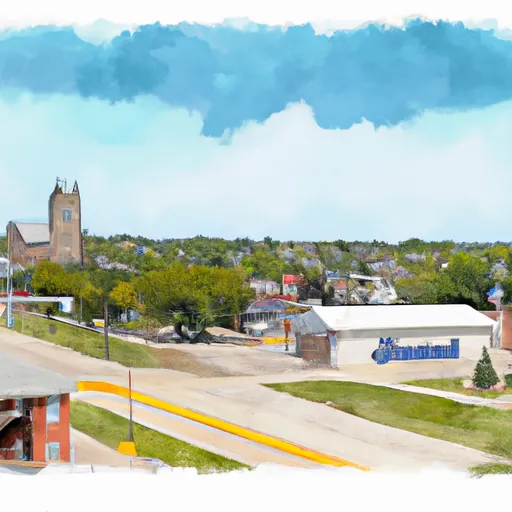°F
°F
mph
Windspeed
%
Humidity











Stanwood, Iowa is a charming small town located in Cedar County. The region experiences a humid continental climate, characterized by warm summers and cold winters. Average temperatures range from around 20°F (-7°C) in winter to 85°F (29°C) in summer. Precipitation is fairly evenly distributed throughout the year, with an average annual rainfall of around 35 inches (89 cm).
Situated amidst beautiful natural surroundings, Stanwood benefits from its proximity to the Wapsipinicon River. This river not only enhances the town's hydrology, but also provides opportunities for outdoor recreation. Fishing enthusiasts can try their luck in catching a variety of fish species, including smallmouth bass and catfish. Additionally, the river offers a picturesque setting for boating, canoeing, and kayaking.
For those who prefer to explore nature on land, Stanwood offers several outdoor recreation opportunities. The town is surrounded by lush green landscapes, making it an ideal destination for hiking, biking, and camping. The nearby Wildcat Den State Park provides scenic trails, sandstone bluffs, and a historic Grist Mill to explore.
In conclusion, Stanwood, Iowa offers a pleasant climate, a beautiful hydrology element in the Wapsipinicon River, and various outdoor recreation opportunities for residents and visitors to enjoy.
Weather Forecast
Stanwood receives approximately 924mm of rain per year, with humidity levels near 79% and air temperatures averaging around 9°C. Stanwood has a plant hardyness factor of 5, meaning plants and agriculture in this region thrive during a short period during spring and early summer. Most plants will die off during the colder winter months.
Regional Streamflow Levels
749
Cubic Feet Per Second
3,010
Cubic Feet Per Second
48,600
Cubic Feet Per Second
386
Cubic Feet Per Second
Nearby Camping
| Camping Area | Reservations | Toilets | Showers |
|---|---|---|---|
| Grand Gulf Military Park | |||
| Lake Chicot State Park | |||
| Leroy Percy State Park | |||
| Natchez State Park | |||
| Chicot County RV Park | |||
| Great River Road State Park |



